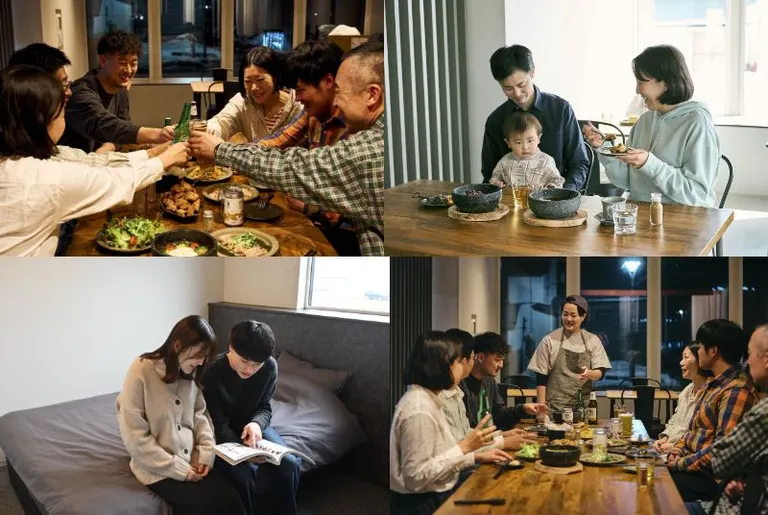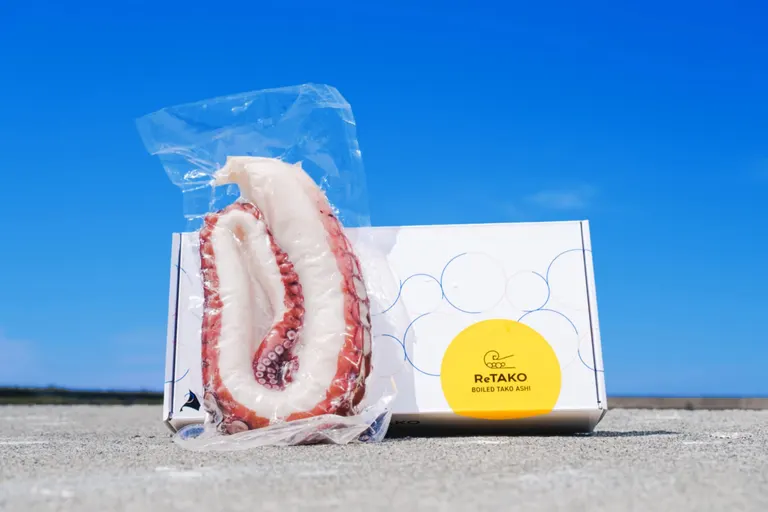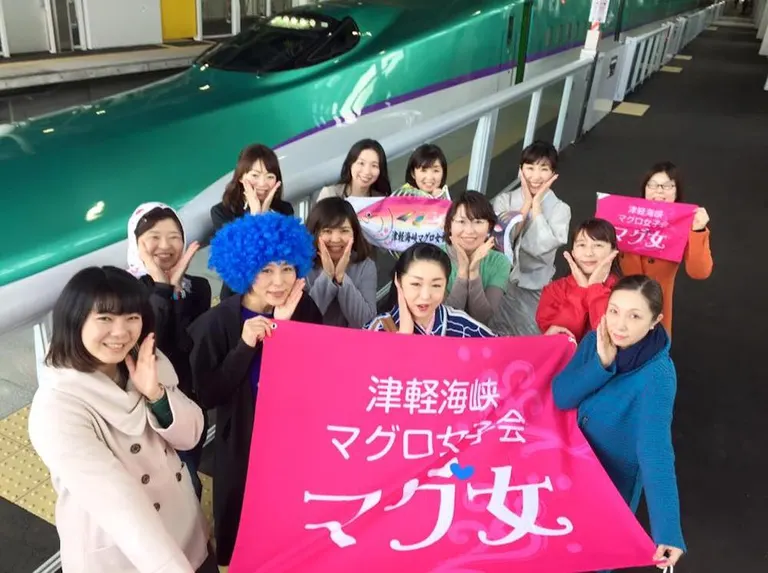
ARTICLES
The fourth-generation proprietress of a long-established inn in Matsumae Town is a member of the "Mag Women" group that unites people's hearts through the Tsugaru Straits! Ms. Natsuko Kudo
As well as being the fourth-generation proprietress of a long-established inn, she is also an active member of "Mag Jo," an organization that brings together women on both sides of the Tsugaru Strait to work flexibly on town development (Natsuko is in a kimono, second from the right in the back row in the group photo).
table of contents
- The fourth-generation proprietress chose the path she wanted to follow
- We want you to work for us for a long time, so we're making bold changes to the work environment!
- A tangible cultural property storehouse has been renovated into a cafe to tell the story of Matsumae history
- "Mag Girls" Connected by the Hokkaido Shinkansen and Local Planning Skills
The fourth-generation proprietress chose the path she wanted to follow
Natsuko Kudo was 30 years old when she decided to resign from the bank in Sapporo where she had worked for eight years and take over her family's inn. Hot Spring Inn Yano was founded during the war by Natsuko's great-grandmother, who was born into the Yano family in Fukushima Town. Her daughter, Yano Masako, opened the inn in 1951 (Showa 26) in the neighboring town of Matsumae Town as a sort of branch. Natsuko's mother, Saeko, later took over as the third generation innkeeper. Natsuko has been frequenting the inn since she was a child, helping to lay out cushions for banquets and seeing her grandmother warming hot sake for the guests, but she confides that "no one ever asked me to take over the inn." "In fact, after graduating from elementary school, I was sent to a boarding school in Sapporo so that I could survive no matter where I was, no matter what kind of work I did (laughs). My grandmother had also told my mother to "follow the path you love," and she told me the same thing. So when I turned 30 and told them I wanted to walk a new path and move back home, both my parents were surprised."
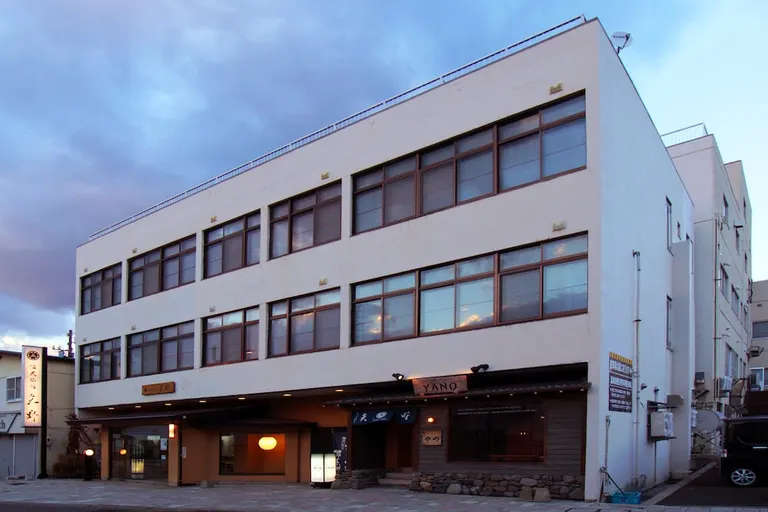
Yano Onsen Ryokan has been welcoming guests with local cuisine and natural hot springs for 70 years in Matsumae, Hokkaido's only castle town.
Even though it is her parents' home, becoming a hostess requires a certain amount of preparation and resolve. Natsuko's mother told her to "be able to immediately take over as a substitute if anything happens to the staff," so she obtained a large bus license and a chef's license so she could drive the minibus for shuttle service. Furthermore, as a fellow innkeeper, he trained at a ryokan run by Tsuruga Resorts, where he experienced a range of jobs such as greeting customers at the entrance, wiping windows, and preparing breakfast. "After work, all the staff go out for drinks. When they see their hotel with the lights on in every room, they proudly say, 'Looks like it's full, isn't it?' Seeing that taught me the most important part of the job of a hostess, and made me think, 'Yes, I want to have an inn with so many staff members who are proud of us.' I am truly grateful to President Masayuki Onishi of Tsuruga for accepting me, even though I didn't know what to do."
We want you to work for us for a long time, so we're making bold changes to the work environment!
The people who supported the "return of the young proprietress" were the staff members whom Natsuko has known since she was a child. The onsen ryokan Yano is supported by a group of friendly people, ranging from those in their 30s to the oldest being 76 years old (!). Natsuko thinks, "I want them to continue working like this for a long time, until they are satisfied with their work." That's why she decided to reconsider the work environment. "In the hotel business, there is a way of working called 'mid-shift breaks,' where you take a break between all-day shifts, but that doesn't allow you to rest your body. So as soon as I returned, we changed to a three-shift system with early, middle, and late shifts. Also, in my mother's time, the people who cleaned the baths were also in charge of the laundry, but hanging it out to dry is quite hard work. We decided to divide the responsibilities. One of our strengths has always been that one employee can take on multiple tasks. It has helped us a lot even during the COVID-19 pandemic." Setting up a dining area in a separate room rather than simply serving meals in the room was also a bold move for a long-established inn. "When you think of a ryokan, you probably imagine guests eating in their rooms, but when you consider the time it takes to bring hot food to each room and for guests to ask for more drinks, the quality of service is actually higher when the food is served in a dining area where staff can keep an eye on it at all times."
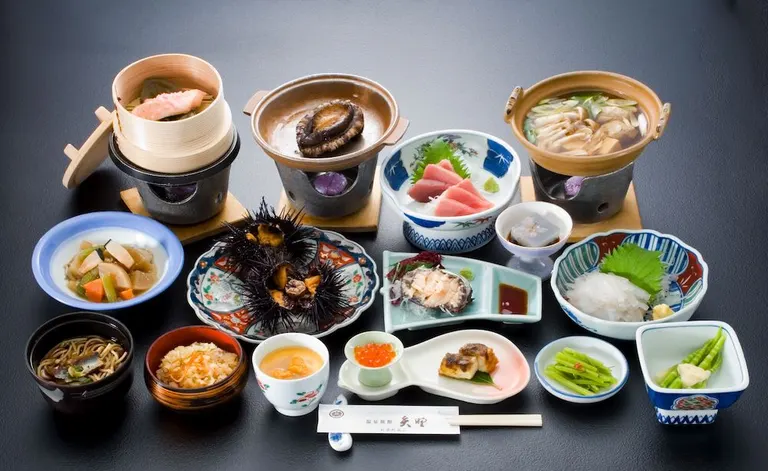
Plans that include "Seafood and Local Cuisine" (subject to change depending on the season) where you can enjoy Matsumae-produced bluefin tuna, sea urchins, abalone, and the local dish of whale are also popular.
Creating a comfortable environment for both customers and the nearly 30 employees, Natsuko's efforts have paid off, and even during the COVID-19 pandemic since 2020, a time of hardship for the tourism industry, not a single employee has left Yano. Natsuko's words, "I think we've been able to get through to this day because of the members we have now," perhaps speak for the feelings of everyone involved.
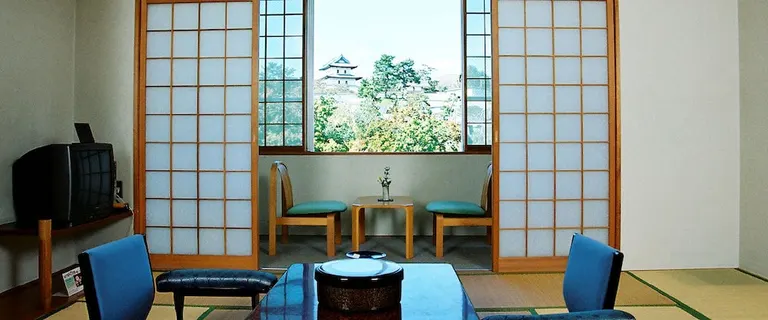
A Japanese-style room with a view of Matsumae Castle. You can enjoy the atmospheric sight of cherry blossoms in full bloom in spring and the castle covered in snow in winter.
A tangible cultural property storehouse has been renovated into a cafe to tell the story of Matsumae history
There is no JR station in Matsumae, so it takes just under two hours by car from Shin-Hakodate-Hokuto Station to get to the inn. If you use public transportation, it takes about an hour and a half by Hakodate Bus from Kikonai Station, so it may not be called a convenient place to access. "Matsumae is not the kind of place you can just drop by on the way there, but for our guests who still want to come, we want to provide them with a level of satisfaction that exceeds their expectations. Inns prosper together with the town, after all," says Natsuko. As if to support this correlation between the town and the inn, a new restaurant directly operated by Yano opened in July 2022: Imise Sakura, a cafe renovated from a 190-year-old storehouse.
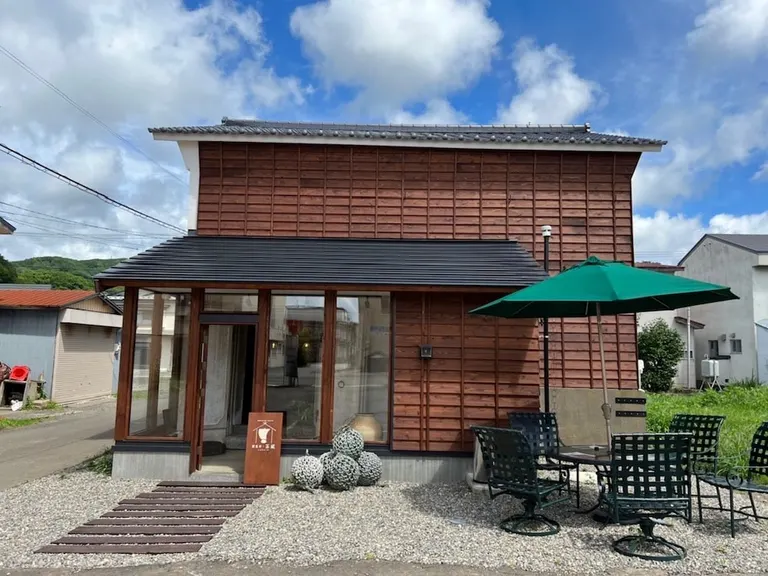
The question "What was the place where you ate meals called in the Edo period?" led to the idea of "Imise," and the name was decided upon as the perfect combination of "kura" (storehouse) and Matsumae's "sakura" (cherry blossom).
The building is the Matsumoto Family Storehouse, a tangible cultural property of Matsumae Town owned by the hot spring inn Yano. Records show that it was built in 1831 (Tenpo 2). For generations, the Matsumoto family has served as boatmen on the Chojamaru, a Kitamae-bune ship owned by the Matsumae clan that traveled between Hokkaido and Honshu around the Sea of Japan during the Edo and Meiji periods. Inside the storehouse were stored historical materials related to Chojamaru, as well as vessels, sliding doors, and hanging scrolls that tell the story of the lifestyle and culture of the time. For this renovation, under the supervision of a local curator, these valuable historical materials will be unveiled as part of the interior after repairs. "If these precious cultural assets are left abandoned, they will simply decay. By utilizing the entire building as a storyteller of Matsumae's history, we have transformed it into a space where visitors can get a real feel for the town's history."
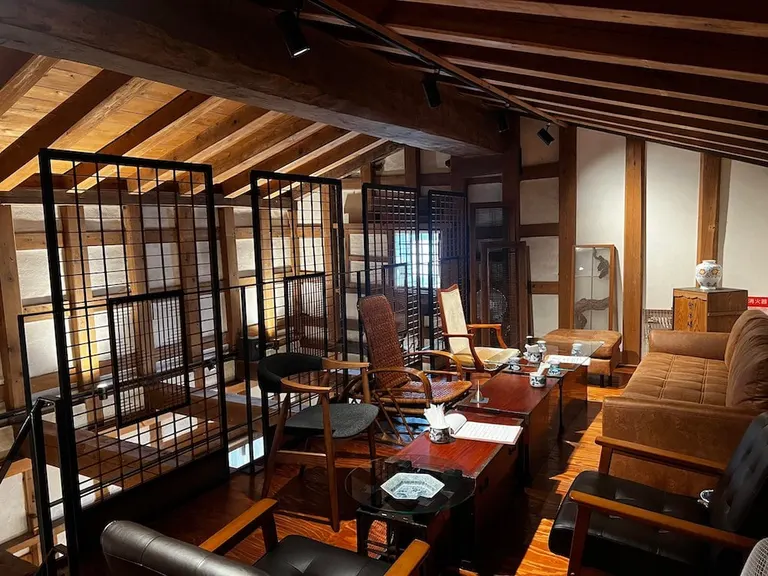
"Imise Chagura Sakura" was reborn amidst the various restrictions associated with tangible cultural properties
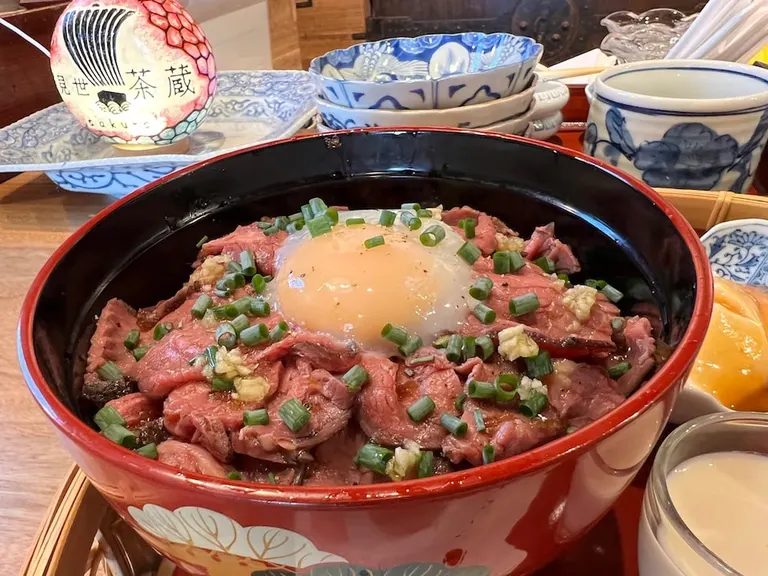
The "flavor change" of pouring soy milk on it is a big hit! "Roast beef bowl made with Hokkaido beef (with fresh soy milk)"
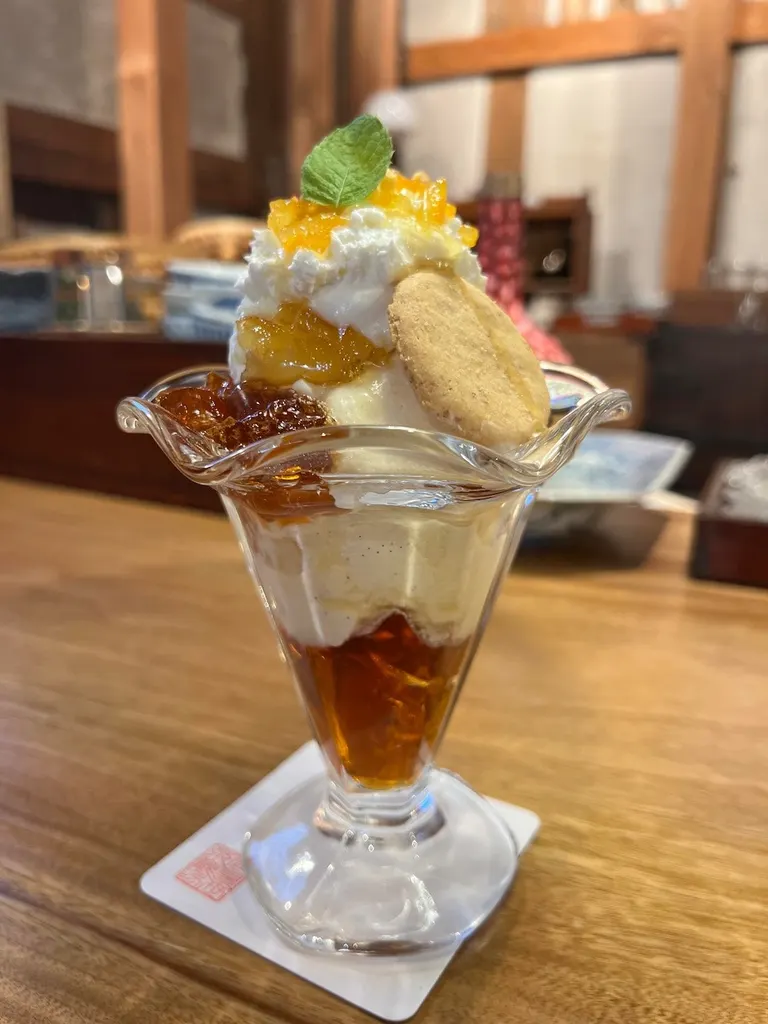
Soy milk rare cheese parfait. "I always use tofu or soy milk made from locally grown soybeans in my cooking."
"Mag Girls" Connected by the Hokkaido Shinkansen and Local Planning Skills
The town development group to which Natsuko belongs, the Tsugaru Strait Tuna Girls' Association, nicknamed "Mag Girls," got its start in 2009 when Natsuko attended a town development seminar organized by the Japan Tourism Agency and hit it off with Shima Yasuko, a self-described "town revitalization guerrilla" in Oma Town, which, like Matsumae Town, is known for its tuna fishing. "In the run up to the opening of the Hokkaido Shinkansen in 2016, various movements began to take place in towns on both sides of the Tsugaru Strait. We wanted to invigorate the town in a way that wasn't constrained by the so-called government or existing organizational frameworks. Shima and I got excited about the idea that women could do this. We reached out to local women who we thought might agree with us, just like fishing for tuna (laughs). Since forming in 2014, we now have over 90 members." Magujo, who come from a variety of professions and regions, do not all work on the same project at the same time, but rather plan and hold events on a regional basis. They do not create a formal organization such as an executive committee in advance, but rather work together when they think they can "share the same momentum." They are run in a feminine way, with an emphasis on "results." "What's unique about Magjo Kikaku is that we plan things that we can do ourselves, as people who know the local area, and we set reasonable prices as a business, such as tours to see the standing neputa floats, a specialty of Goshogawara city, Aomori prefecture, from inside the neputa rather than from the outside, and in our case, a plan that includes a 'feudal lord's cuisine and a guided tour by the proprietress.' We connect Aomori and Hokkaido through the hard link of the Hokkaido Shinkansen, and also through the soft link of friends who can share the same aspirations and concerns. It's actually an amazing thing," says Natsuko proudly.
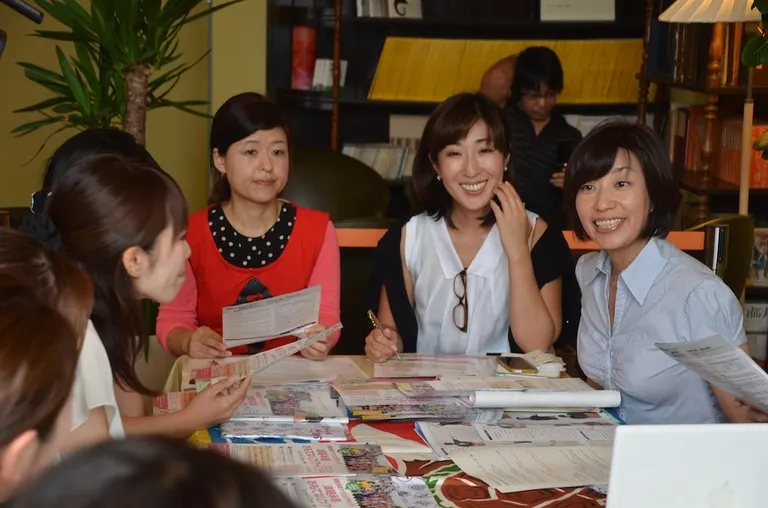
Mag-onna received the 24th Aogin Award (Community Contribution Category) in 2016, the 9th Japan Tourism Agency Commissioner's Award in 2017, and the Cabinet Office Women's Challenge Award in 2018. Natsuko Kudo is second from the right in the photo.
"Mag Onna's town is a small town that is generally considered rural. But there is always something about this town that makes people want to go out of their way to visit. It is our role to unearth that. Only when the countryside is revitalized can the whole of Japan be filled with vitality, and I believe the true effects of the Hokkaido Shinkansen will be realized." In March 2022, a highway will be built from Hakodate Airport IC to Kikonai IC, shortening the time to get to the airport to about 30 minutes. "I hope this will be a tailwind," says Natsuko. From now on, the number of "Imise Chagura Sakura" locations will increase, giving the "Mag Girls" an opportunity to show off their skills.
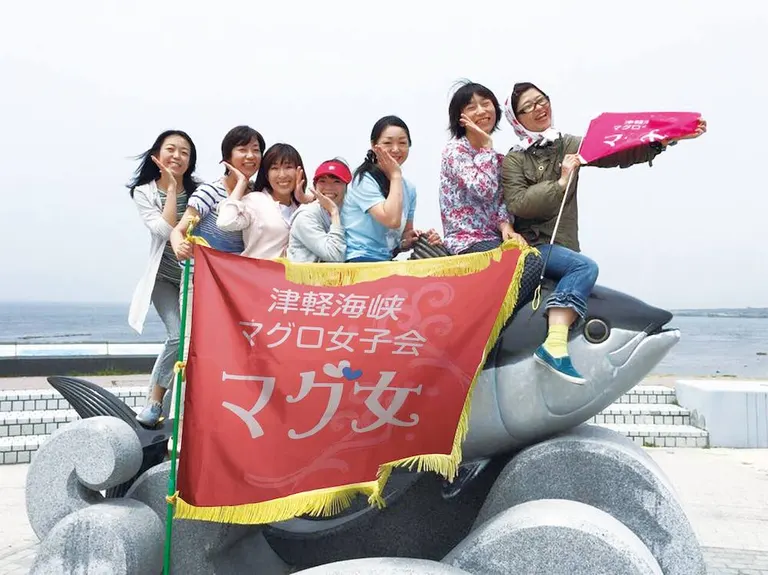
The event month "Mag Girl's Seikan Exhibition," which was suspended due to the COVID-19 pandemic, will also partially resume in November 2022. Check out the Mag Girl official website for more details!
Natsuko Kudo's recommendations for food, places, and souvenirs in the Matsumae area and Aomori are currently being introduced in HAC Hokkaido Air System's in-flight magazine! Take a plane trip around Hokkaido and check it out!
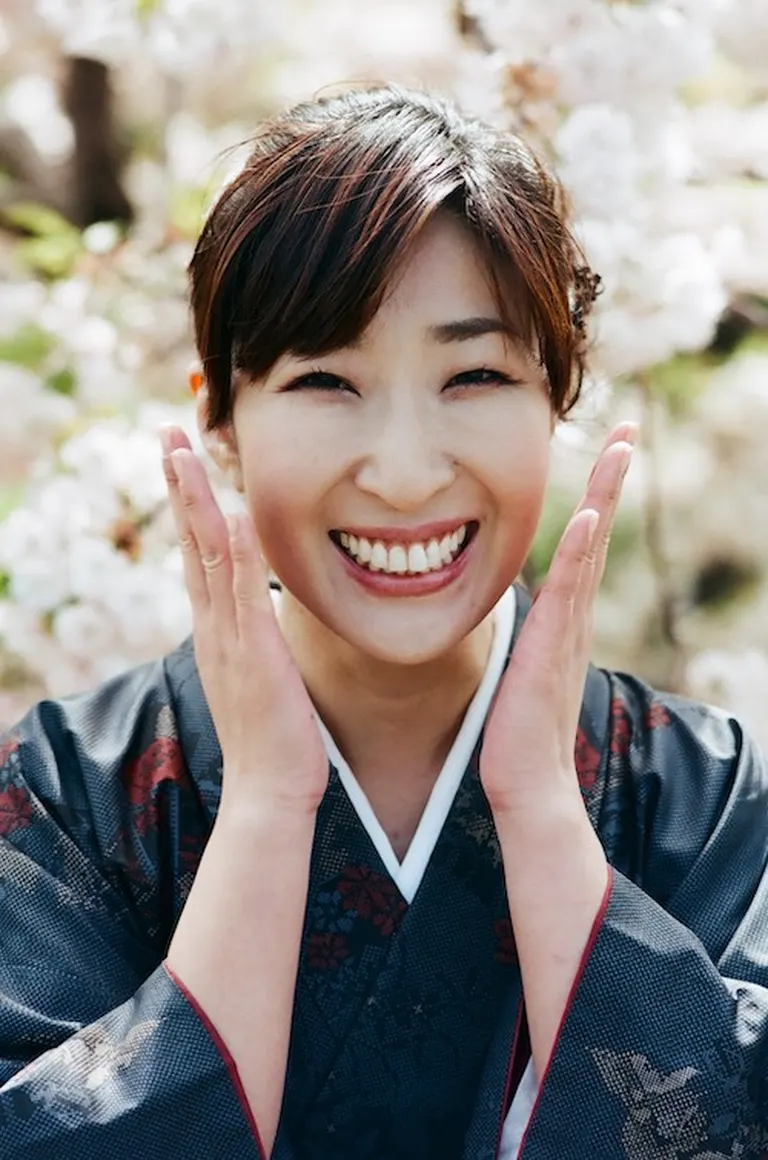 Hot Spring Inn Yano's Proprietress / Tsugaru Strait Tuna Women's Gathering
Natsuko Kudo
Hot Spring Inn Yano's Proprietress / Tsugaru Strait Tuna Women's Gathering
Natsuko Kudo
Born in Matsumae-cho, Hokkaido in 1973. After working at the Sapporo head office of Hokuyo Bank for eight years, she obtained a large vehicle license and a chef's license, and began training to be a hostess at her family's hot spring inn, Yano, in 2005. In 2018, she was handed the baton by her mother, Saeko, and became the fourth-generation hostess. In 2014, she formed the "Tsugaru Strait Tuna Women's Association" with Shima Yasuko from Oma-cho. In July 2022, she opened a cafe directly managed by Yano, "Imise Chagura Sakura." It has become a popular new tourist spot in Matsumae-cho. "I have a daughter, and I tell her, just like my mother told me, to 'follow the path you love.'" ●Onsen Ryokan Yanohttps ://www.matsumae-yano.com/ ●Tsugaru Strait Tuna Women's Associationhttps ://magujyo.link/
Writer Profile
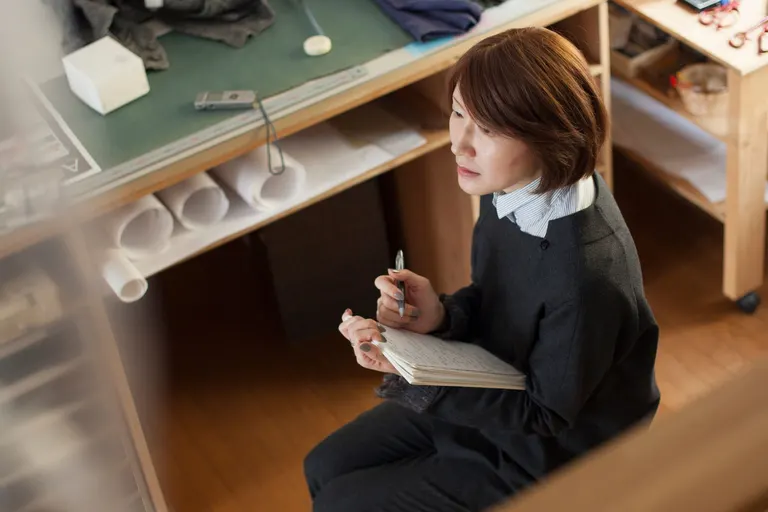 Yuko Sato
Yuko Sato
Writer. Living in Sapporo. Supporting Hokkaido bookstores, publishers, and people related to books through the web magazine "Hokkaido Bookstore Navi." Shelf owner at the new book store "Seesaw Books" in Kita 18-jo, Sapporo. Author of "Until Japan's Poorest Tourist Train Starts Running: The Miracle of the Nagamare Kaikyo," which describes railway tourism in Hokkaido through the Isaribi Railway in southern Hokkaido. Follow on Twitter/Facebook.






